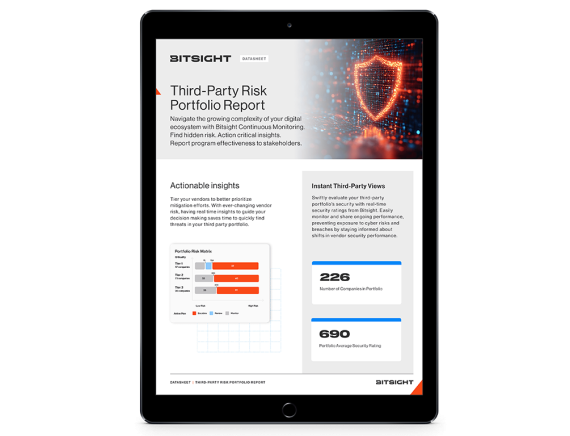Download our vendor portfolio risk report sample to get an exclusive look at the actionable reporting capabilities third party risk management teams can use to reduce critical portfolio risk.
5 Vendor Evaluation Tools to Add to Your Cyber Risk Management Toolkit

Data breaches that originate through third parties are more commonplace than organizations are used to. The SolarWinds hack and Kaseya ransomware attack are two recent examples of threat actors exploiting the security practices of third-party vendors to breach an entire network of connected organizations.
There are many ways out there for your organization to effectively assess third-party risk. Here are five of the most efficient vendor evaluation tools that you should include in your toolkit.
1. Vendor self-assessment or self-reporting
A vendor-self assessment is an important tool for due diligence during the onboarding process. Vendor self-assessments allow security teams to collect information about the security posture of third parties and how they handle risk.
To accurately assess each vendor, you need to know what questions to ask. If you’re getting started with your third-party risk management program or want to streamline your current process, we’ve put together a helpful guide that helps focus your self-assessment questionnaire on the most critical questions – and why they’re important.
2. Automated, data-backed evaluations
While vendor self-assessments play a valuable role in managing third-party risk, they are limited by their subjectivity. Risk managers must take each vendor at their word or spend a great deal of time manually verifying each response. And, because assessments only offer a point-in-time view of third-party risk, they are no help in continuously monitoring for changes in each vendor’s security posture.
Your organization needs a vendor evaluation tool that allows you to automatically assess each vendor prior to onboarding and for the life of the relationship.
With Bitsight for Third-Party Risk Management you’ll receive unprecedented insight into each vendor’s security posture based on objective, verifiable data. With a clear picture of third-party risk, you can quickly verify the information each vendor reported in their self-assessment. Then, once the contract is signed, Bitsight continuously monitors for emerging risk and alerts you in near real-time alerts when a vulnerability or issue is detected. You can even share Bitsight’s findings with your vendors so that risk mitigation becomes a collaborative process.
3. Measure historical security performance
An important, yet often overlooked area of third-party monitoring is what a vendor’s historical performance looks like. A vendor might have had no cybersecurity incidents over the past year, but what if they had suffered multiple major breaches in the five years prior?
Bitsight for Third-Party Risk Management considers a vendor’s historical security performance, not just the cyber risk that’s detected in their current digital environment. Analyzing this data as part of your vendor evaluation and monitoring process gives a more complete view of a third-party’s overall program performance and can prompt further due diligence.
4. Third-party maturity models
A cybersecurity maturity model is a plan or framework that your organization can follow to help you understand how effective your third-party risk management program is and where you should focus resources and budgets.
For instance, at Bitsight, we help security leaders mature their programs by following a cybersecurity model based on the Deloitte Enterprise Risk Management Evaluation. This model can help you determine your program’s maturity level based on four key indicators: strategy and governance, people, process, and technology.
By evaluating and ranking each of these four categories, Bitsight can help you identify areas for improvement and allocate resources to build the most effective cyber risk management program.
5. Peer and industry analysis
Your organization can also evolve the maturity of its third-party risk management program by understanding the security standards against which your industry is measured. For instance, a financial services company is held to a higher standard of security than a foodservice business and should aim for a higher level of maturity in its third-party risk management processes.
Whatever your industry, you can easily discover the cybersecurity landscape, expectations, and standards of care using Bitsight Peer Analytics. You’ll discover the relative performance of your overall security program in the context of your peers and sector. With this insight, you can set improvement goals – such as higher standards of security for certain vendors – allocate resources for the greatest impact, and measure progress over time.
Learn more about how you can mature your vendor risk management program.



